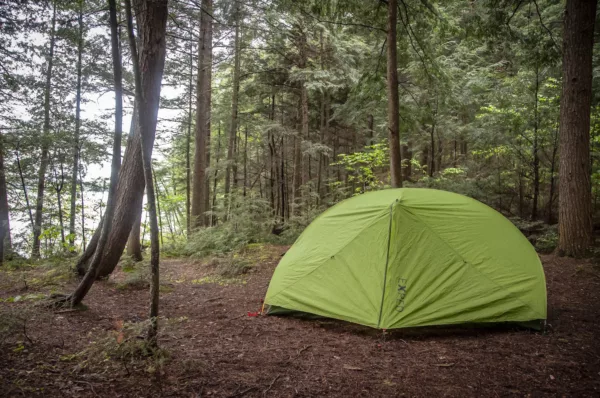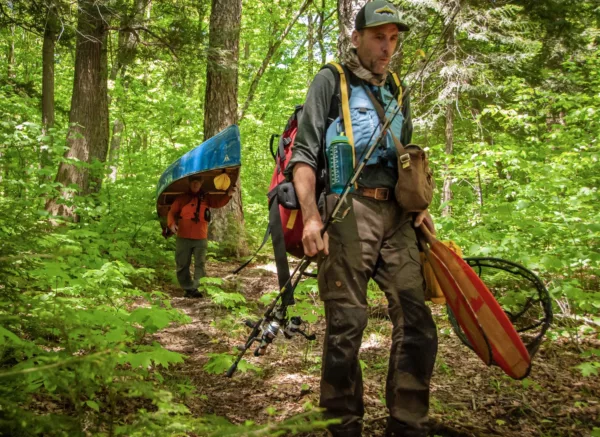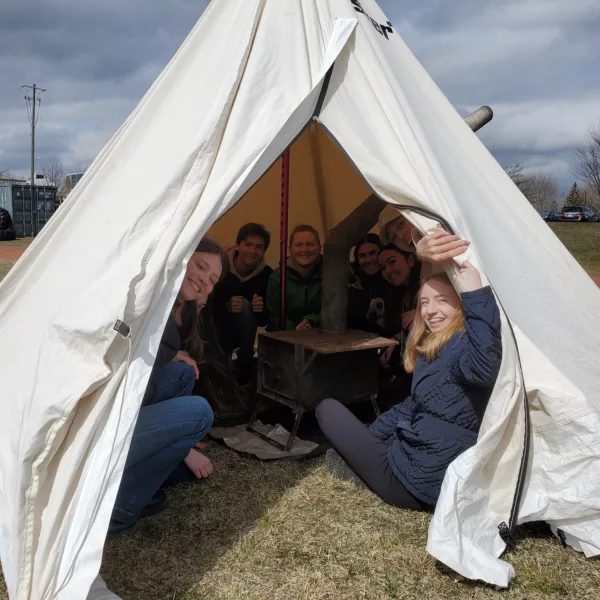The Happy Camper: Canoeing Canada’s Mississippi River, Part 1
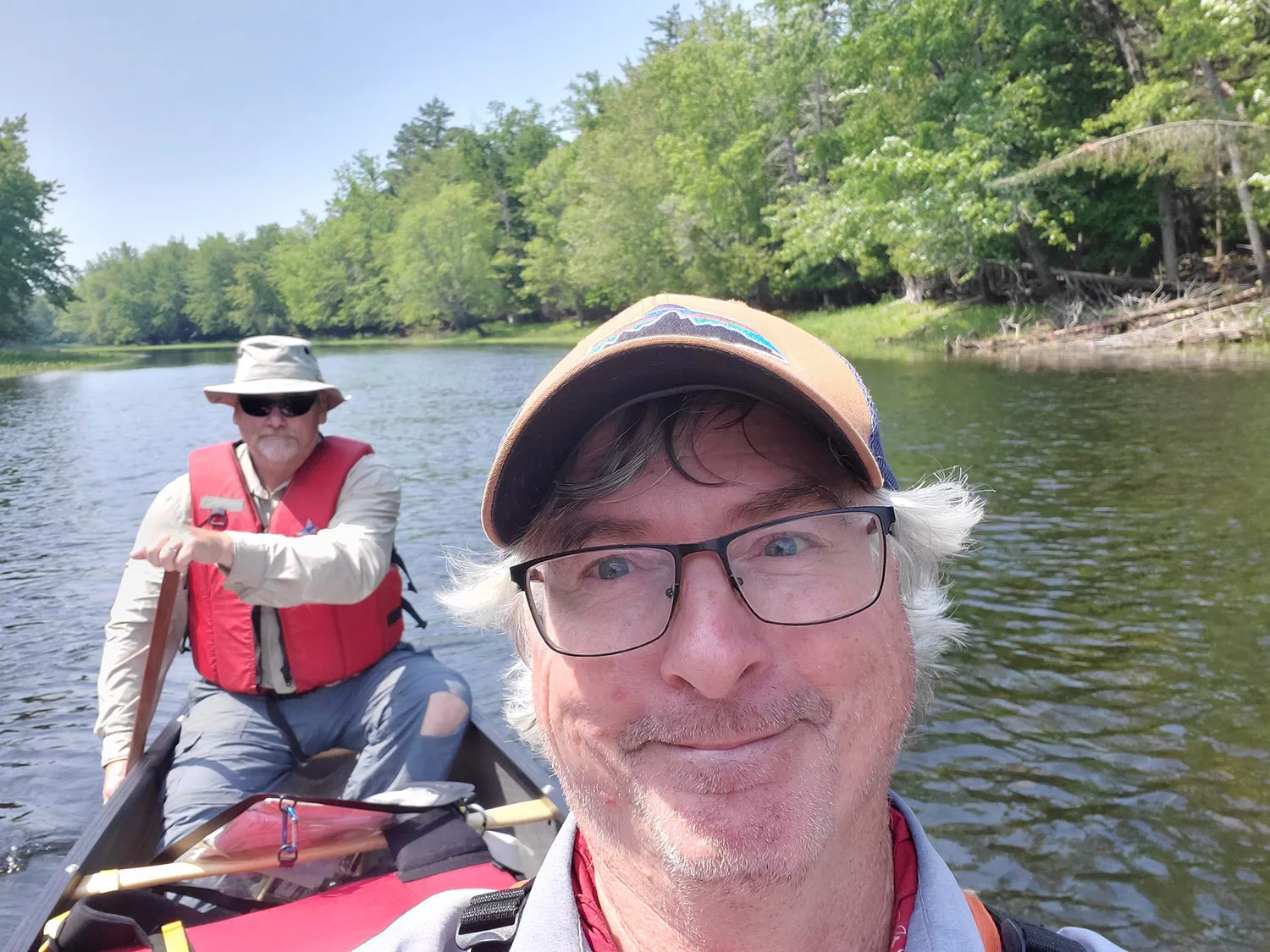
In the mid 1990s, I was working on a paddler’s guidebook for Ontario—Up The Creek—and I figured the Mississippi River would make a good chapter. Not the one that Mark Twain wrote about in the southern US, but the Mississippi that twists its way through southeast Ontario. Yes, Canada has its own Mississippi River. The waterway was the first canoe route to be promoted in Canada’s Book of Recreational Canoe Routes way back in 1910. The Mississippi Valley Conservation Authority had a pamphlet explaining the rapids and portages down the full length of the river, from Bon Echo Provincial Park on Mazinaw Lake to the Ottawa River—a length of just over 200 kilometres. It sounded all too perfect to explore.

I got to the third portage of the trip, a mere half a day into the eight-day journey, when I was stopped by a disgruntled landowner. He had laid barbed wire, ankle high, along the portage, held down by numerous ‘no trespassing’ signs, as well as a few slabs of plywood spray-painted with intimidating threats towards paddlers. I noticed him standing on his cottage porch, just downriver and up on a hill, so I gave him friendly wave. He gave me the index finger and yelled profanity at me.
More than a little distraught, and feeling defeated, I paddled and portaged back to my car and went off looking for a less conflicting canoe route to write about.
That encounter ate away at me for years. Seriously! How could one person refuse another’s right to paddle and portage down a river in Canada, a waterway that had been promoted as a recreational canoe route since 1910—not to mention travelled by Indigenous peoples for well over a thousand years prior to that?
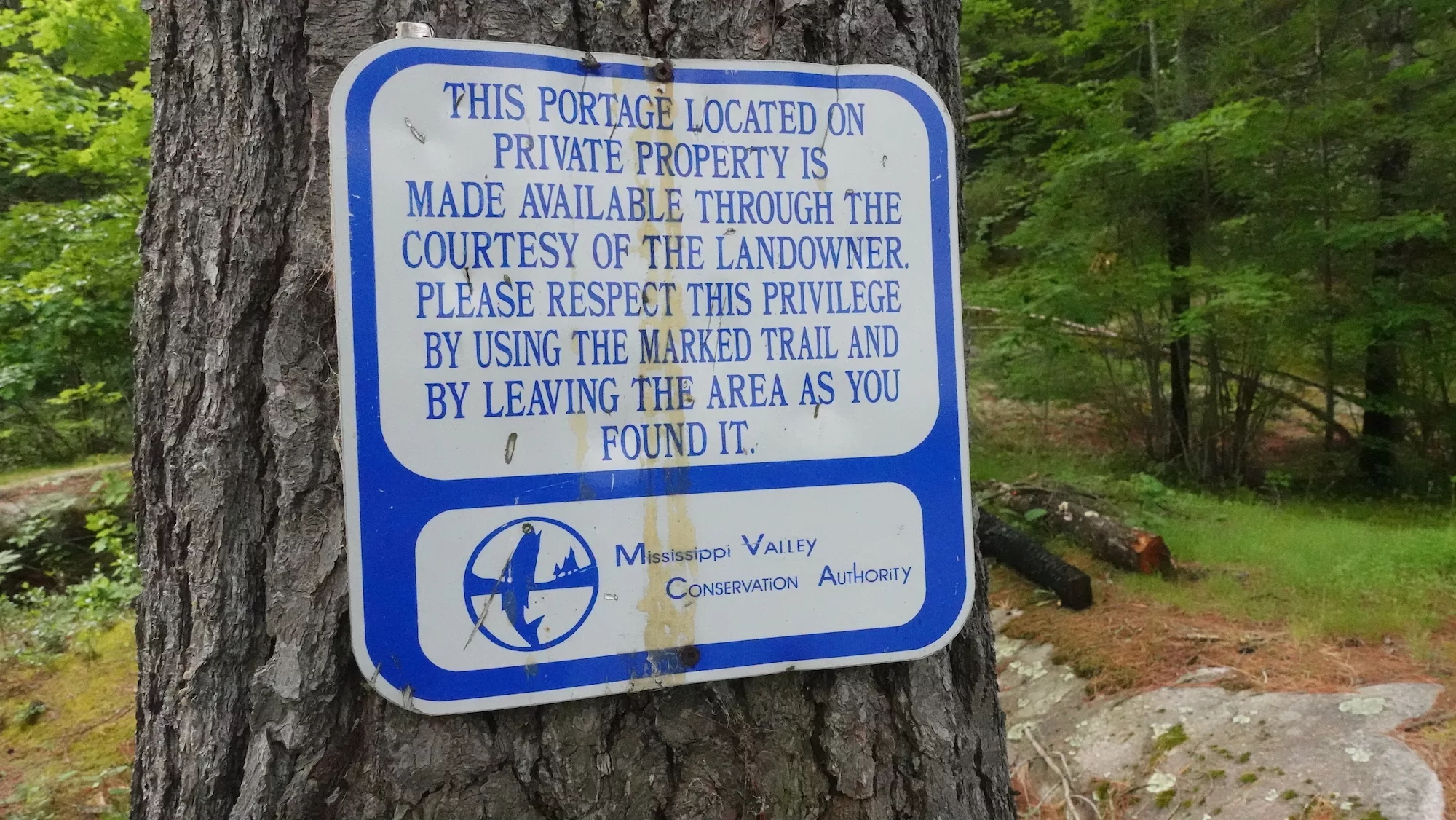
Interestingly enough, the history behind Canada’s Navigable Waters Protection Act began on Ontario’s Mississippi River. It was after the infamous “Lumbermen’s Feud” of 1882. Peter McLaren owned a lumber mill on the upper Mississippi River. To help flush his logs downstream, he constructed a series of timber slides on the river and some of its tributaries. Another mill owner, his rival Boyd Caldwell, took full advantage of McLaren’s work and attempted to drive his logs through the same slides. The feud went to fist and cuffs, and then to court. Caldwell made the claim to McLaren that no single person can own the navigable rights of a river, and that he had the full justification for his actions.
Caldwell won! He established the principle in Canadian law that waterways are open to all, and that private interests cannot refuse passage to anyone if the waterway is navigable. The definition of a ‘navigable water’ was quite simply stated anywhere you can ‘float a canoe.’

A few decades later, with some wisdom and stubbornness built into my character over the years, I returned to Ontario’s Mississippi River to complete my 200-kilometre journey from Bon Echo Provincial Park on Mazinaw Lake to the Ottawa River—landowners be ‘dammed.’
A canoe trip down Ontario’s Mississippi River is a big deal. It’s a big river. The source of the Mississippi River drains out of Kilpecker Creek at the headwaters of northern Mazinaw Lake. It then drops 827 feet over what geologists label a ‘cleft’ between two ancient rock formations. Along the way, it tumbles over countless rapids and falls, through forested banks, lowland swamp, rolling farmland and quaint country hamlets. It grows in strength as it descends, drawing on 260 lakes and other river and creek systems (Indian, Clyde, Fall, Buckshot, Antoine, Cranberry…).
It may not be as mighty as Mark Twain’s Mississippi—but it sure has as much history and character.

Here’s the first of a video series I created about my incredible journey. Day one has my good canoe mate, Andy Baxter, and I beginning the trip by drifting by the 250 plus Indigenous pictographs along Mazinaw Lake at Bon Echo Provincial Park (the Algonquin people called the river “Pictured Waters”), then wading down ankle deep water of the not-so-mighty Mississippi (water levels were extremely low on the upper stretch) and then making camp at Kashwakamak Lake, part of North Frontenac Parklands. Thankfully, we managed to complete the day without any landowner disputes. In fact, we met some awfully friendly folks who were intrigued about our trip and eager to help us out.
More from The Happy Camper:
The Happy Camper: Reviewing David Norwell’s “A Complex Coast”
The Happy Camper: Freeze Dried On The Go Meals (OTG) Review
The Happy Camper: New-ish Ontario Canoe Maps











